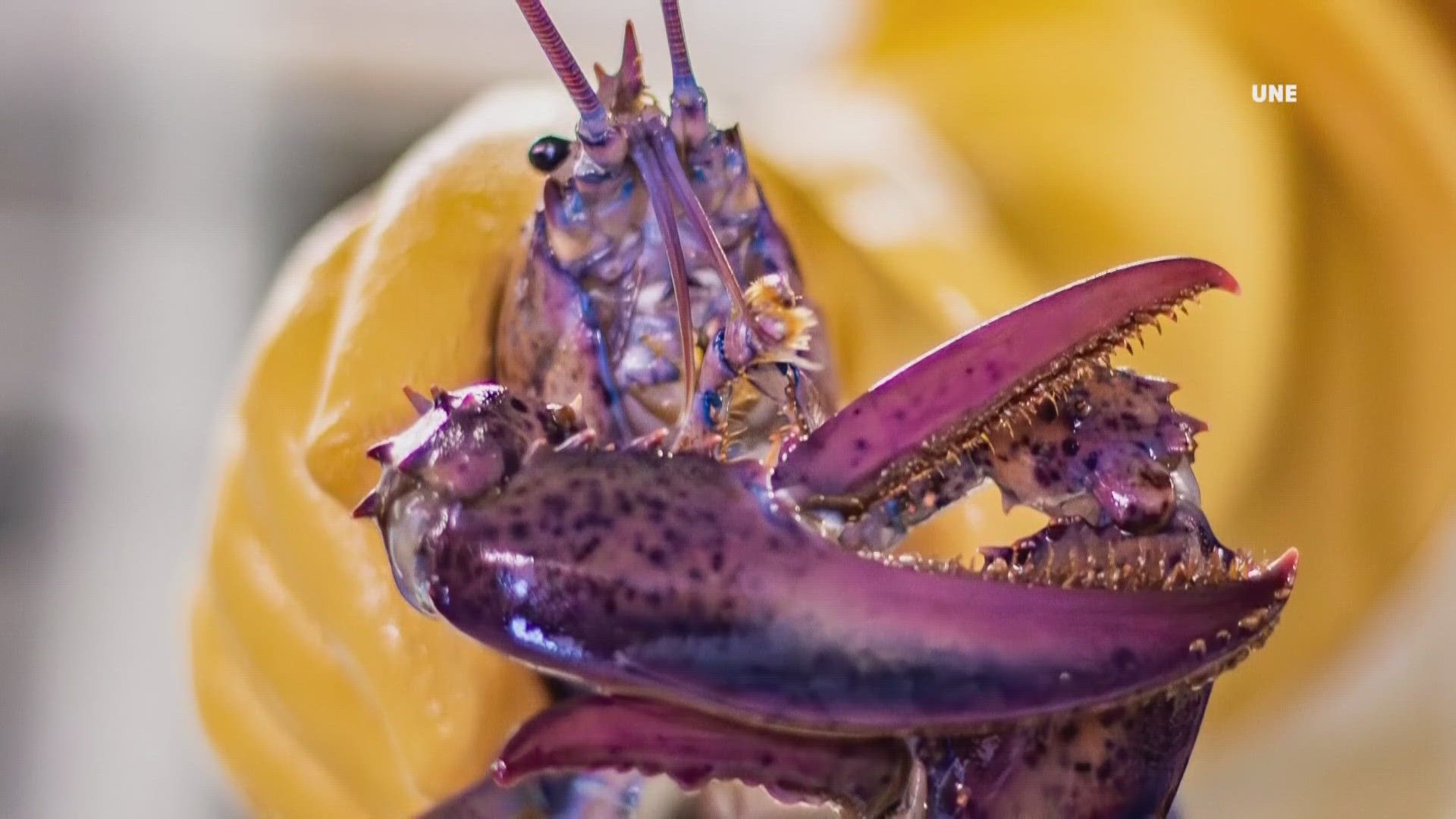BIDDEFORD, Maine — They keep showing up in the traps of Maine lobstermen, often becoming viral sensations.
Lobsters that come in a range of colors from orange and yellow to blue—so rare, the chances of finding some of these crustaceans can be 1 in 50 million.
Over the years, large tanks of seawater at the University of New England in Biddeford have been home to a menagerie of rare colored lobsters donated by lobstermen trawling in the Gulf of Maine.
"We used them for outreach and education but we didn't do real research with them," Markus Frederich, Ph.D., a professor of marine sciences at UNE, explained.
But that situation changed after the university received donations of two rare colored lobsters. Fig, who originally was blue, but his color has since changed to purple, and Peaches, an orange one-clawed lobster caught in Casco Bay.
The two rare lobsters presented researchers with an opportunity to try to solve the mystery of why these lobsters come in different colors. Frederich said there is no evidence pointing to radiation or pollution as the cause.
"Those different colorizations come from different mutations in the genome, but those mutations happen automatically," Frederich added.
There are plenty of test subjects ranging from orange, yellow, and calico varieties, including Skittles, and the chances of finding another one is 1 in 30 million.
"The rarest is a bright white one—which I have never seen before, probably like albino or ghost lobster," Frederich quipped.
The study could also lead to answers about lobsters like Current, with a line down its back showing two colors, mottled-brown and blue. Donated by a Boothbay resident, Current was two animals in the early embryonic stage.
"Larvae of a blue lobster fused with the larvae of one of those regular-colored lobsters, like conjoined twins. That grew up into this one animal," Frederich explained.
Peaches is also giving researchers a unique chance to study lobsters at a very young life stage. After arriving at UNE, Peaches released thousands of eggs she carried on the underside of her tail. They are expected to hatch in May or June.
"The idea is to figure out, how many of the offspring of this orange lobster are orange themselves. How many are the regular colors?" Frederich queried.
At some point, the brightly colored lobsters will be returned to the ocean, but first researchers will try to find non-invasive ways to extract their DNA to find out why they are hatched in different colors.
Student researchers will also examine if the rare colored lobsters are affected by water temperatures, diet, and what kind of role it could play for the future of the species.
The findings could be released in the next year or so. UNE has also received permission from the Maine Department of Marine Resources to study undersized and egg-carrying lobsters.

